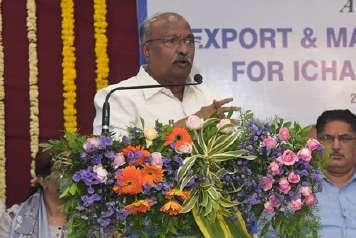14
COVER STORY
ORGANIC COTTON – A SUSTAINABLE SOLUTION FOR THE FASHION INDUSTRY MS. SOMASREE ROY Textile Value Chain As people become more aware of the environmental impact that synthetic fibres create, sustainable and environment-friendly materials are being developed. The development of these fibres that can substitute synthetic fibres has piqued the curiosity of researchers. As a result of our collective awareness of the fashion industry’s ecological consequences, businesses have begun to embrace sustainable materials.
that can exhibit more sustainable manufacturing • Organic cotton 1st cultivated in the 1980’s practises. According to the Textile Exchange’s Cotton • The process of production is less damaging to the environDemand Insights Report, ment and humans demand for organic cotton • Organic cotton is a type of cotton that has been grown natuwould climb by 84 percent rally without using synthetic agricultural agents by 2030, relative to a base• Organic cotton is the most skin-friendly, relaxing, and secure line year of 2019/20. This shift to organic cotton is a natural fabric. positive step forward for • Tanzania (5%), Tajikistan (4%), and the United States were the fashion industry. the top organic cotton-producing countries Tanzania (5%), Tajikistan • Uzbekistan and Myanmar were added to the list of organic (4%), and the United States cotton growers in 2019–20. were the top seven organic One of the most dramatic cotton-producing countries biodiversity, soil biological activity, and changes has been the shift away from biological cycles. Organic cotton is the in terms of output, accounting for 95% traditional cotton. As an environmen- most skin-friendly, relaxing, and safe of global output (3%). tally friendly option, sustainable and natural fabric. In 2019–20, two new nations — Uzbeksocially responsible businesses are now istan and Myanmar — were added to Application adopting organic cotton fabric as well. the list of organic cotton growers, with The process of production is less dam- • Organic cotton, unlike ordinary cotat least three more likely in the coming aging to the environment and humans. ton, is never sensitive to infant skin. years. Unlike the traditional style, which uses It’s the perfect material for covering synthetic pesticides and hazardous and cleaning newborns, especially for Tanzania and Kyrgyzstan were the two chemicals, organic farming has a low- producing garments, bandages, clean- countries that contributed the most to impact approach. ing and disinfecting injuries, baby crib global growth in 2019–20, followed by bedding, baby outfits, towels, and a va- Uganda, the US, Pakistan, India, and What is Organic Cotton? Turkey. riety of other items. Organic cotton is a type of cotton that The Benefits of Organic Cotton Ecohas been grown naturally without us- • It is used in making clothes. Bedding, friendly ing synthetic agricultural agents like T-shirts, underwear, and even footwear fertilisers or pesticides. In addition, are all made using it. Ear swabs, cotton 1. Eco-friendly the crop is farmed without the use of pads, and sanitary napkins are among It is the outcome of a technique of agrigenetically-engineered organisms. Or- the personal care products that contain culture that is both ecologically friendly ganic cotton cultivation’s ingredients, this substance. and efficient. Organic cotton production agricultural procedures, and manu- • It can also be used effectively in proemits less carbon since it consumes less facturing techniques are environmen- cedures where infection from any cause fuel and energy. It also minimises contally friendly as opposed to traditional is potentially lethal. tamination of water since it is produced cotton growing. It was first cultivated without using chemicals. The workers’ in the 1980s as a means of ensuring • Organic Cotton Seed Oil, a residue health is also not affected. Finally, the sustainable, environmentally friendly, of organic cotton production, is widely production of organic cotton doesn’t inand organic farming. Organic cotton used in snacks and livestock feed. clude the excess usage of pesticides and benefits human and environmental Market Demand fertilizers, which damage the environhealth by promoting and enhancing Consumers are searching for apparel ment irreversibly.
OCTOBER 2021
Key Points



















